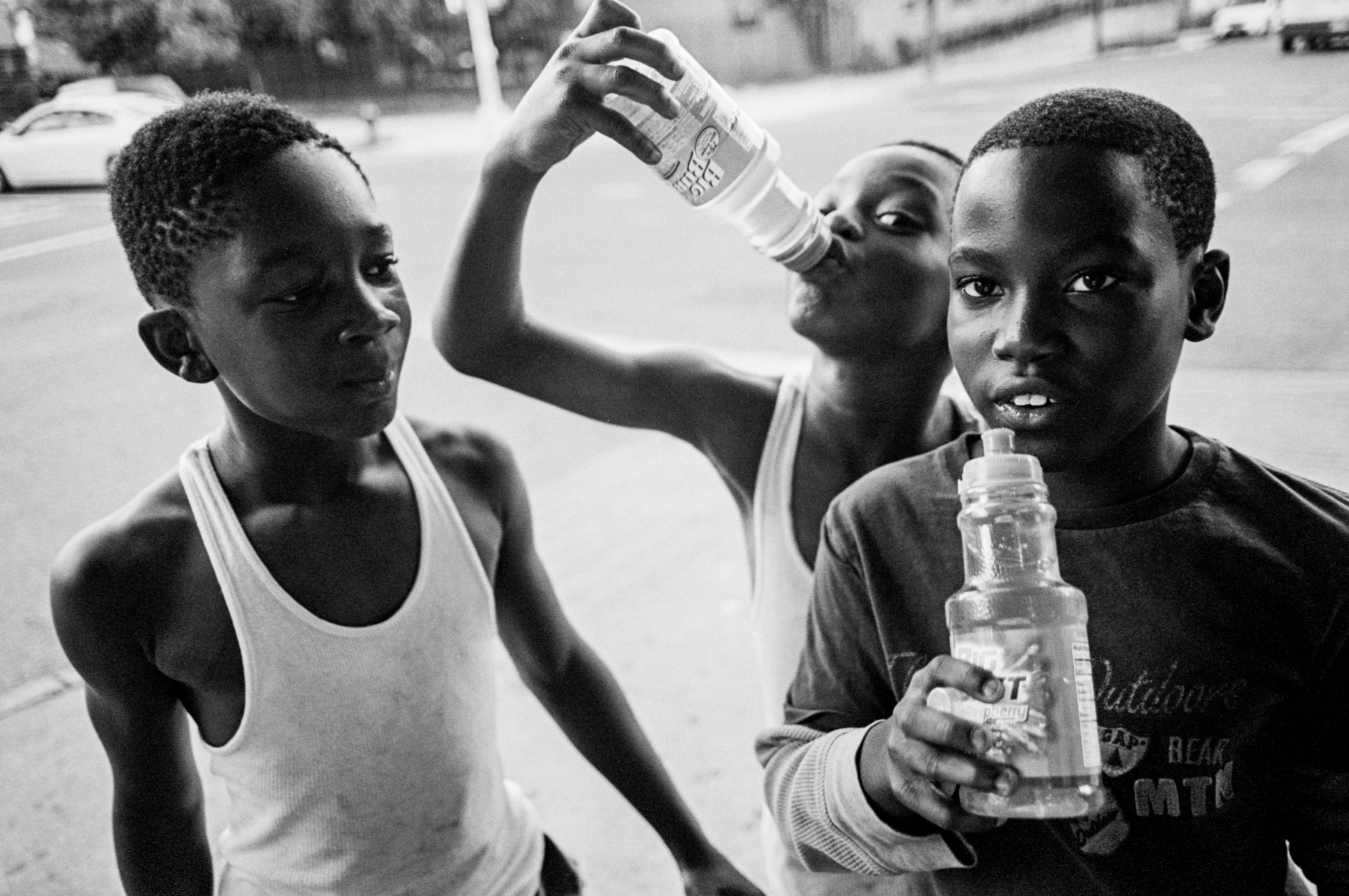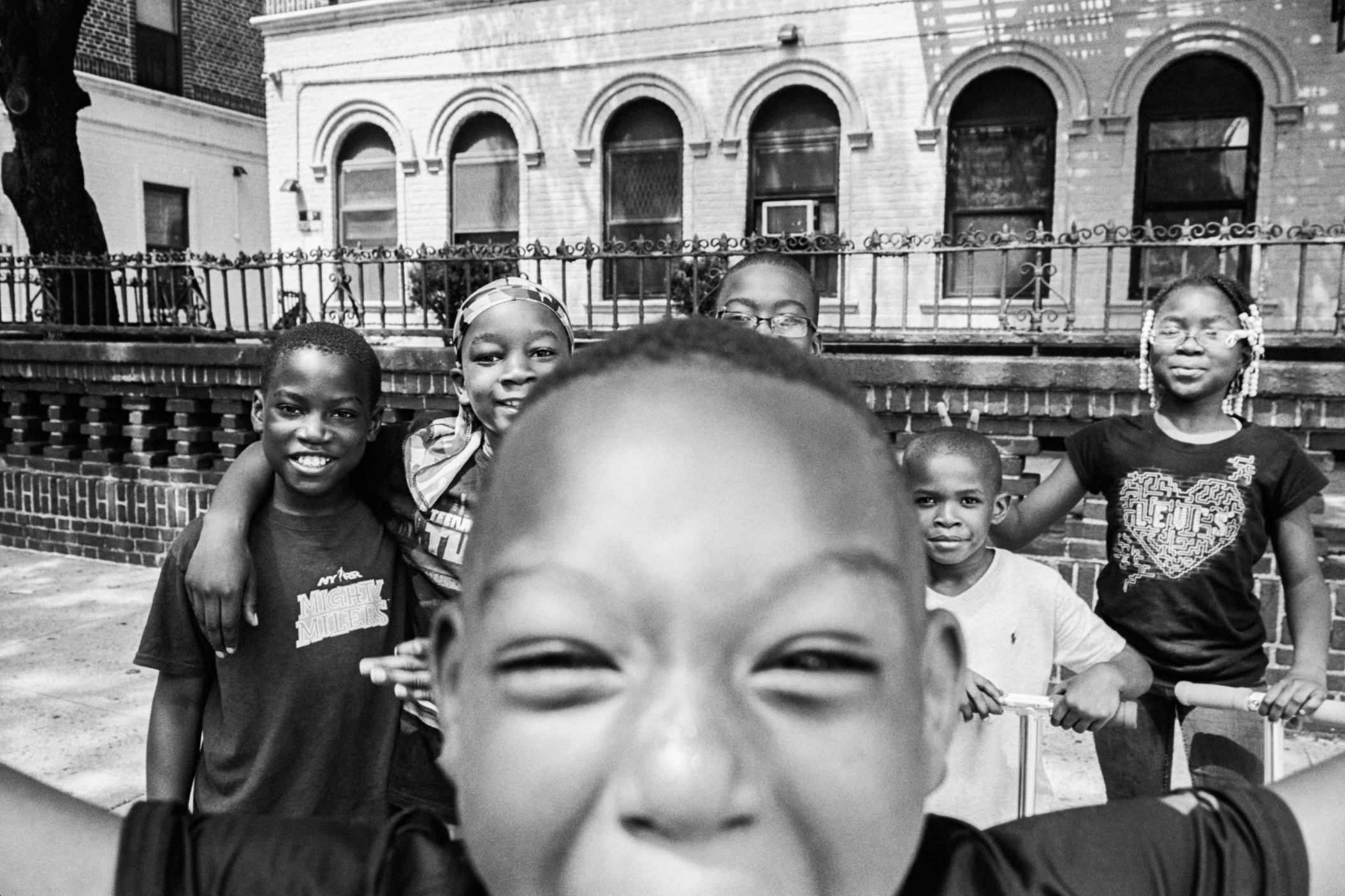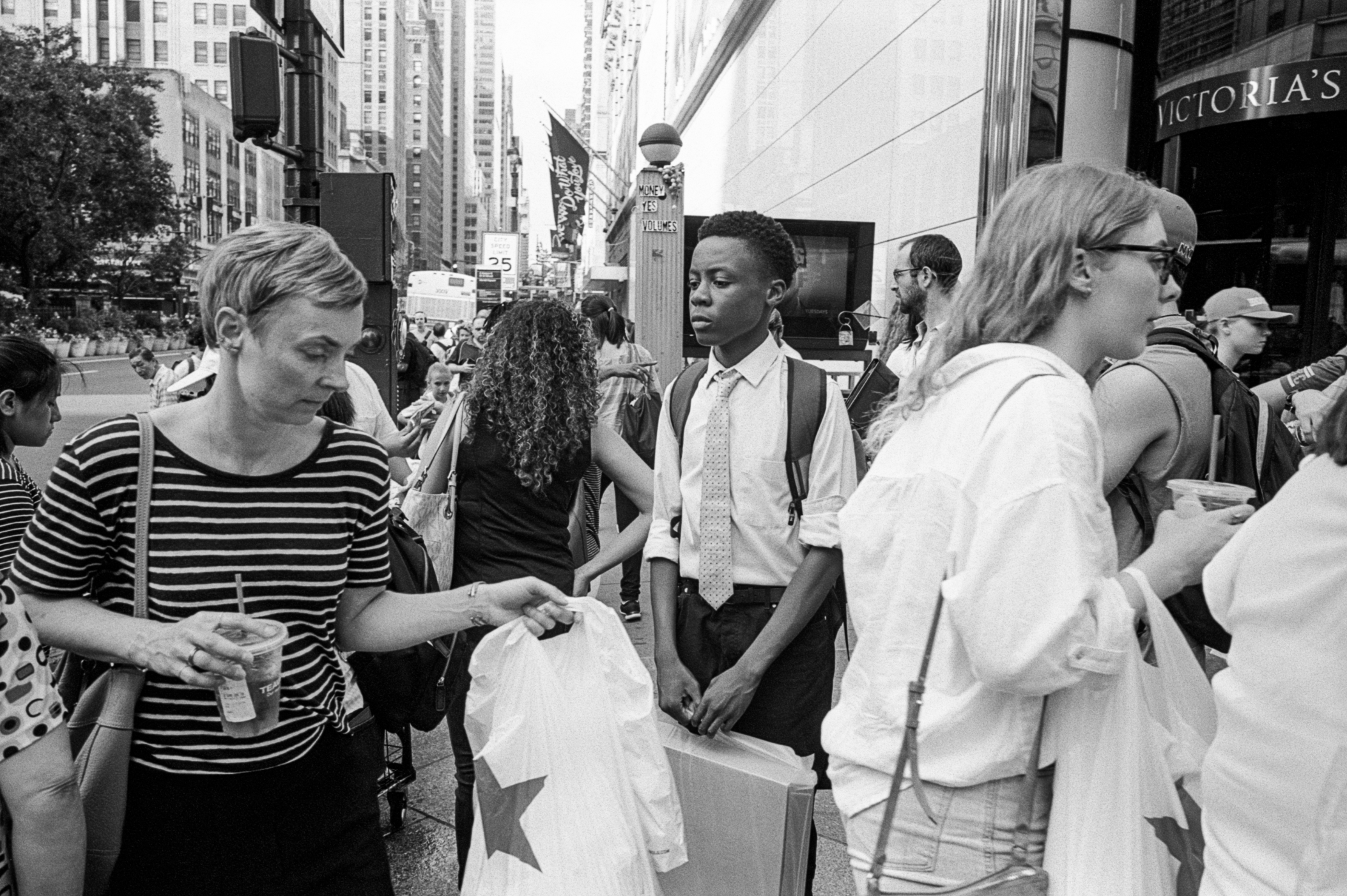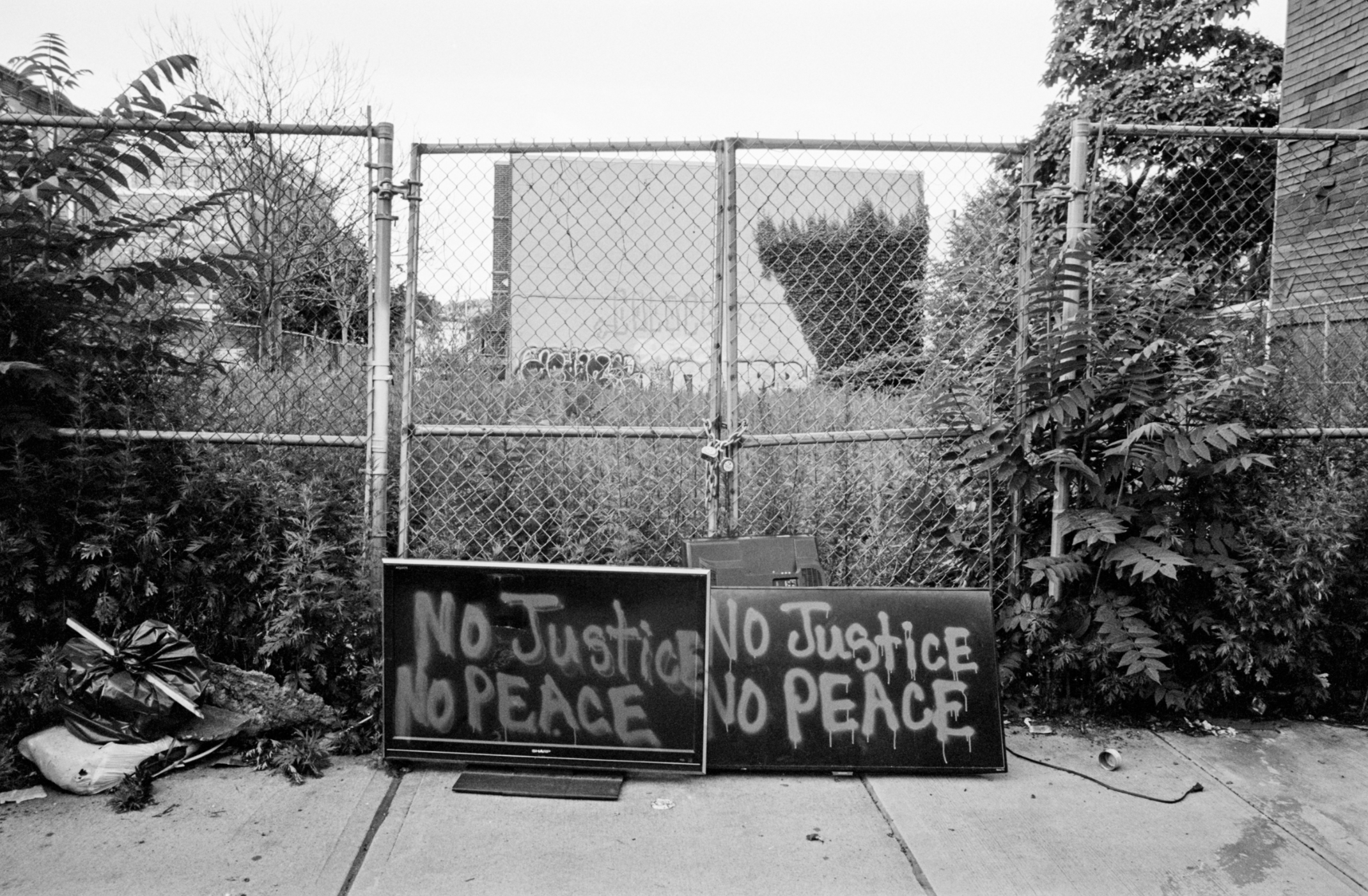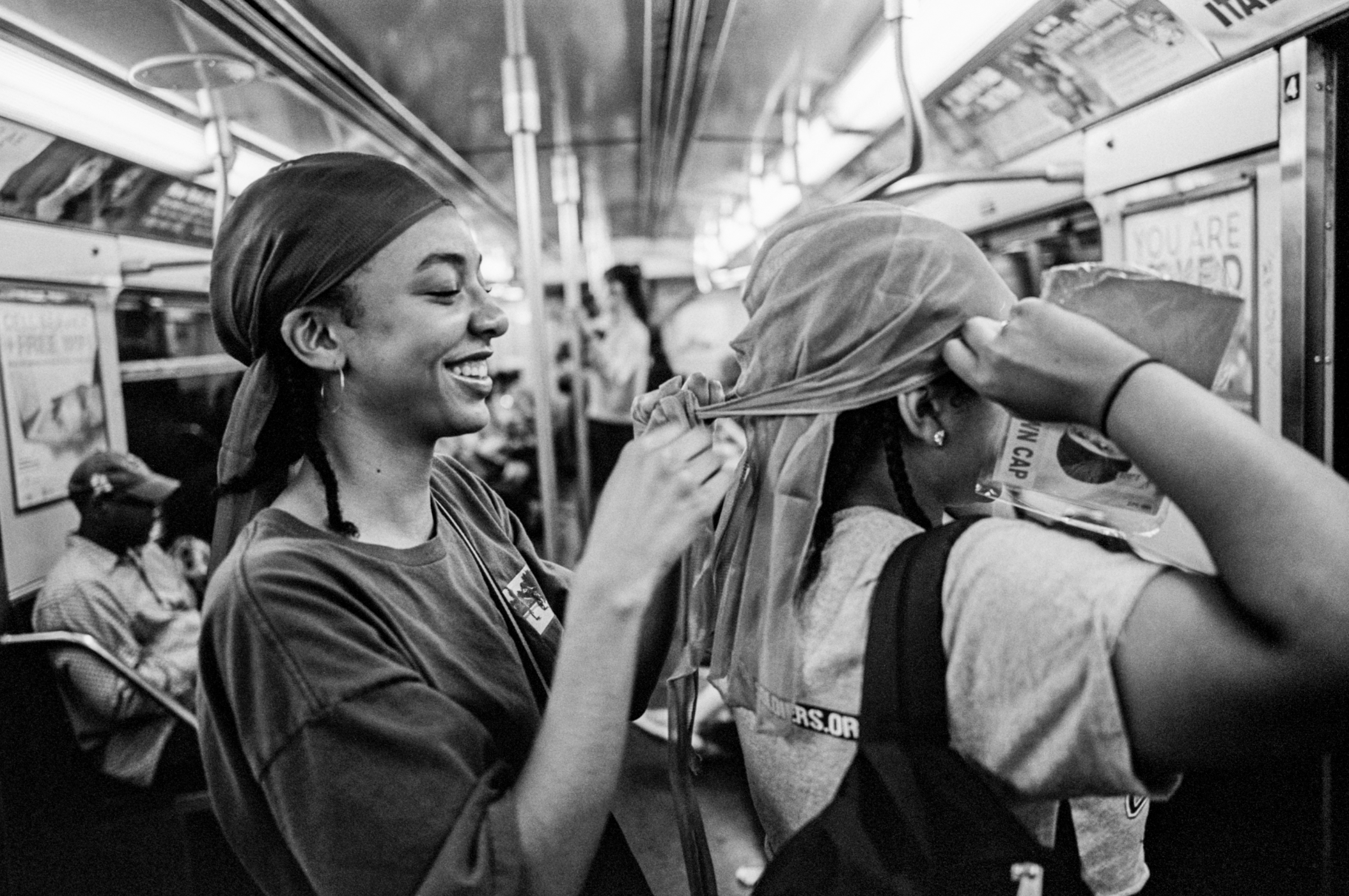Ebb & Flow: An Interview with Andre D. Wagner

FORM’s full interview with Andre D. Wagner appears in FORM Vol. XXV, available on April 15, 2021.
Andre D. Wagner is a photographer based in Brooklyn. He moved to New York after growing up in Omaha, Nebraska and earning a degree in social work from Buena Vista University, where he was a star on the basketball team. He considered playing basketball professionally and pursued a Master of Social Work at Fordham University before settling into a career as a photographer. Most of Wagner’s work documents the daily life of people in his neighborhood, but he has also traveled across the country as a photojournalist for publications like the New York Times, The New Yorker, and Vogue. In 2019, he worked on a movie set for the first time, capturing key images for “Queen & Slim.” FORM talked to Wagner about working during the pandemic, the movement for racial justice in America, and his new book.
Dani Yan: You’re a self-described people person: People are almost always the subjects of your photographs, and getting physically close to people is central to your practice. How has being away from people during lockdown impacted your work?
Andre D. Wagner: It’s been huge, and I’m still trying to figure out how to navigate it. And it’s changed as the months went by. In March, I was down in Selma photographing the Bloody Sunday anniversary. My wife was in Italy, where everything was going crazy. So we made it back and she had to self-quarantine, and we just started this whole ride. At first, I was still working and roaming around with my mask. It wasn’t that bad at first and everyone wasn’t wearing a mask. But as time went on it just got worse and worse, especially here in New York being in the epicenter of it.
So it’s been tough, but I have taken a few assignments. I did an assignment for Time where I was in Manhattan and doing a story on how COVID affects cab drivers. I was putting myself in a lot of compromising positions being in and out of cabs all day, riding the subway and riding buses. Outside of doing the assignments, it’s been incredibly difficult to wrap my head around everything and figure out how to make my own photographs at this time. But I didn’t immediately take a step back and see what was happening, I just stayed at it and kept going. That’s been a learning process for me, and it's also shaped the work I’ve been making over the past few months. It’s really been a whirlwind. I went from putting myself in compromising situations and still trying to make photographs to where I am now, which is way scaled back and hardly doing what I usually do.
For the past two months, I’ve been waking up at 4 a.m. and going outside at 5 a.m. to start my day, when the sun is rising and there’s hardly anyone outside. I’ve been making photographs in that two hour window in the morning. I’m the type of person that makes pictures every day, whether I’m taking a couple pictures or shooting all day. For me, touching my tool sharpens my mind and my eye and keeps me comfortable. I like to make pictures every day, so I knew I wasn’t going to completely stop working, but my approach has been completely different.
DY: You’ve said that “the best things about photography are found in the process of making the work.” What have you learned from your process?
AW: I study a lot of photography. I love photo books, looking at pictures, studying people’s images, reading about photography and listening to talks and lectures. But nothing has given me more knowledge and insight than actually being out in the world with my tool. Nothing can replace that experience of moving your body, looking at people and carrying yourself. Nothing can replace that understanding of light, seeing what light does when it bounces off a window or what something looks like when it’s backlit. Nothing can replace a shared moment between two people. I think about walking down the street and seeing a group of Black guys and one of them giving me a head nod. Nothing can replace that cultural interaction or that heightened sense of being in a place.
A photograph can move you and teach you. I’m constantly trying to learn from other people’s work. But nothing’s better than actually being out there and doing it. That’s how you have revelations, put to practice your understanding, and get to new places. It’s getting lost in the process of making photographs instead of being in a controlled frame of mind all the time. I’ve always put a lot of weight on really being about it and not just talking about it.
DY: I was really struck by a passage you recently wrote for the New York Times about wanting to document recent protests against police brutality. You wrote: “I had nothing left; I was so weak, the camera was just too heavy.” Have you ever felt like that before?
AW: No, I haven’t. I think I’ve had to take a step back and prioritize my own well being and my own mental health. There’s a lot of energy that goes onto my work, constantly meeting new people and engaging with folks and trying to match their energy. And photographing is a very physical process. The way I've been feeling lately, maybe it’s just what happens when you work so hard.
At this time, I think everybody’s trying to find out what this time means to them and how to come out of it as a changed person. Obviously the world has changed, but I think we are also shifting and changing as individuals. I think that’s what I’ve been going through myself. I appreciate this path that I’m on since getting here and working and becoming an artist, but also trying to listen to myself when I need to have some different priorities. I’ve been able to take a step back and write and think. I’m about to start going to therapy, which I’ve never done. I’m actually thinking about how these things affect my own mental state. I think as a man and a photographer and being a very serious athlete growing up, I’ve had to carry this kind of bravado and confidence. But at the same time, I’ve internalized all of the trauma and the way that I’ve dealt with that stuff hasn’t always been the best. So this has helped me rethink a lot about my personal health and well being. It’s really interesting to think about how your craft or your art can help you slow down and take care of yourself.
DY: At the start of June, you posted a powerful photo and caption on Instagram. You ended the caption by announcing the title of your book set to be released later this year — “New City, Old Blues”— which is meant to speak to our current social moment. You’ve said before that you want your work to be written in American history. The current moment and movement against anti-Blackness should be a defining one for our country. How do you see your work fitting into it?
AW: So much of the history of photographs has been told through the lens of white photographers, especially white male photographers. My skin affects the way I work and I’ve never heard these conversations happen in photography. So I’m speaking my truth; I’m trying to bring awareness to what it’s like for Black photographers and Black artists to go out into the world and make work. It’s been complicated making that work, because I feel like my path is so different from what I know about in photography.
I’m trying to be true to myself and tell my story. And I think if I’m true to myself, then it’ll speak to other people. I’m part of the collective Black experience, but there’s also a very individual experience within that. I’m trying to make work that adds different perspectives to the medium and history of photography. I want to make very beautiful photographs that also say something, that have weight to them. There’s so much photography out in the world, so I don’t want to be adding nonsense, I want to add something that can stand the test of time. We’ll have to see what happens and if my work can be a part of that. Or maybe I can at least show other people that look like me that photography is a worthwhile pursuit.
DY: The photo from that post is one of my favorite shots of yours, the other being from “Here for the Ride'' of a smiling stanger tying another Black woman’s durag on the subway. Both photos stirred up some really strong feelings in me, but in almost entirely opposite ways. I’ve honestly never been moved by photographs the way that I have been by yours. And actually right after I wrote most of my questions for this interview, I saw your Tweet: “your own work ever make you cry?” I can definitely answer this from my perspective, but I want to hear from you — what is it about your photos that causes such a strong emotional response?
AW: I think what gives my photographs power is the lived experience that comes through in them. When I look at my images, I see myself over and over again in so many different ways. And it’s strange to go out in the world and make photographs of things that aren’t yours, but to make them yours. That’s the power of photography that I believe in.
I can take you to the subway and we can ride the subway together and you may even be next to me when I make that image of the girl tying the durag. The making of the work is so banal most of the time, there’s no crashing moment, it just comes and then it’s gone. I think what photographers have the capability to do is to extract something that’s fleeting. Like that girl tying the durag — you see it, but you’re so caught up in trying to get home on this crowded train. My job is to not be caught up in that. My job is to be caught up in the vision, the emotion, and the personal pull. It’s my job to be on a constant internal search based on what’s happening in the outside world. What everyone else sees as something in their way, I see as material to use.

